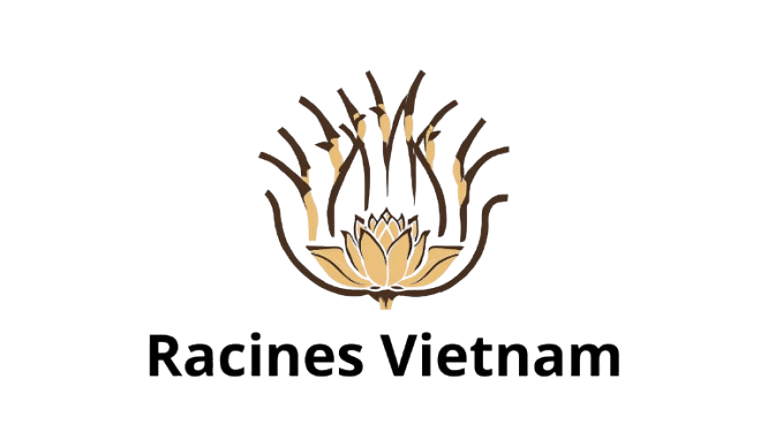“A blog created by an adopted Franco-Vietnamese for all those seeking to reconnect with their origins.”
Learn Vietnamese on Your Own – Best Guide for Self-Study 2025
Master Vietnamese alone in 2025 with the best tools, apps, and tips. Learn tones, grammar, and speak fluently at your own pace.
5/9/20253 min read
How to Learn Vietnamese as a Self-Taught Student? Methods, Tools & Tips for 2025
Introduction: Why Learn Vietnamese on Your Own?
Learning Vietnamese is more than acquiring a foreign language. It's a personal journey of reconnecting with one's heritage, understanding a rich and complex culture, and opening doors to deeper human connections. Whether you're an adoptee, a traveler, or a cultural enthusiast, self-learning Vietnamese can be deeply rewarding—and with the tools available in 2025, more accessible than ever before.
Whether you want to learn a language like Vietnamese, learn Italian, speak a language, learn Spanish, or simply enrich your language skills, this guide is for you. It's also ideal for any language learner passionate about learning a language, learning foreign languages, or expanding their skills across multiple languages through online language learning platforms and structured language courses.
Vietnamese: A Unique Language with Real Challenges
Tonal Structure and Pronunciation
Vietnamese is a tonal language. Each word's meaning changes depending on its tone, which can be confusing for native-speakers and English speakers. Unlike in learning a new language like French or Mandarin-Chinese, where stress and intonation matter but don't redefine words, Vietnamese requires precise tone and pronunciation. This makes it particularly fascinating from a linguistic and second language acquisition perspective and essential for achieving conversational confidence and proficiency.
A Language Built on Latin Script
Good news: Vietnamese uses the Latin alphabet. This makes it easier for learners from a native-language, mother-tongue, or first-language like English, French, or Spanish to study a language like Vietnamese. Whether you're in a language school, using flashcards, or learning independently, the transition is smoother than with non-Latin scripts like Arabic or Mandarin-Chinese.
Step-by-Step Plan for Self-Taught Vietnamese Learners
1. Start with Sounds and Listening
Before diving into grammar or vocabulary, develop your listening skills. Use platforms like Pimsleur, YouTube, or language-learning software like Rosetta Stone. Audio immersion develops language acquisition and reinforces your learning experience.
Listening actively is essential for mastering language and culture and progressing from beginners to proficient.
2. Learn Vocabulary with Repetition
Use spaced repetition tools like Anki, Quizlet, or Memrise to build your vocab. Focus on useful words and phrases (greetings, daily life, food, essential expressions). Whether you learn language via apps or paper-based flashcards, repetition and context are key to memorization and improving comprehension.
3. Grasp the Grammar Without Getting Stuck
Vietnamese grammar is approachable:
No conjugation
No gendered nouns
No plural endings
You can learn a second language efficiently using language classes, language lessons, or digital language programs. This supports your journey whether you're a bilingual, monolingual, or multilingual learner.
Best Tools and Platforms for Learning Vietnamese in 2025
Pimsleur – Great for conversational listening practice
Anki / Quizlet – Top-tier for memorizing and managing vocab with flashcard systems
Italki – Personalized sessions with native-speakers or a tutor
Duolingo / Babbel – Popular tools for language learning and building habits
Rosetta Stone / Transparent Language – Premium language-learning software for structured learning and language practice
YouTube & Podcasts – Watch with subtitles for listening and language immersion
Foreign Service Institute – Free, detailed guides for foreign language learning and structure
These tools also help you if you plan to learn another language like Arabic, Japanese, Mandarin-Chinese, or to learn French.
Common Mistakes to Avoid
Ignoring tones and pronunciation early on
Relying too heavily on translation instead of real usage
Avoiding speaking due to fear of mistakes
Mixing dialects unintentionally
Overlooking the cultural layer in the learning process
Staying Motivated Over the Long Term
Set personal milestones to track your learning language goals
Connect with languages online communities or local language schools
Join language exchange forums with polyglots, tutors, and learners who also want to learn other languages
Document your progress with journals or digital tools
Explore music, films, or blogs in a new language and in a foreign language
Use various learning materials like textbooks and native content to enrich your input
Conclusion: A Language of Identity and Expression
Vietnamese is more than just a language to learn—it’s a way to explore self-identity, family history, and Southeast Asian perspectives. Whether you're guided by a language teacher, using language learning apps, or following your curiosity, the tools to learn languages are more accessible than ever.
This guide is perfect for linguists, travelers, bilingualism enthusiasts, and those curious to study languages like Vietnamese alongside Portuguese, Arabic, Italian, French, Mandarin-Chinese, or Japanese.
FAQ: Learning Vietnamese in 2025
Can I learn Vietnamese without living in Vietnam?
Yes. With languages online tools and global tutors, you can learn new languages from anywhere.
How long to become conversational or fluent?
With daily practice, a motivated learner can reach conversational fluency in 6–12 months.
Is it easier than Hebrew or Mandarin?
For English speakers or Romance language speakers, yes—Vietnamese uses a familiar script and has minimal grammar.
Do I need to be a polyglot to succeed?
Not at all. Whether you're a beginner or already learning a second language, the right approach helps anyone speak another language and learn foreign languages effectively.
Main Menu:
Explorations:
Resources & Immersive Content
Community & Support
Legal & Languages
Contact & Social Networks
✉️ contact@racinesvietnam.com
📱 Instagram | Facebook | YouTube
©️ Copyright
© 2025 RacinesVietnam.com — Tous droits réservés
Site indépendant, créé sans code, hébergé par Hostinger
